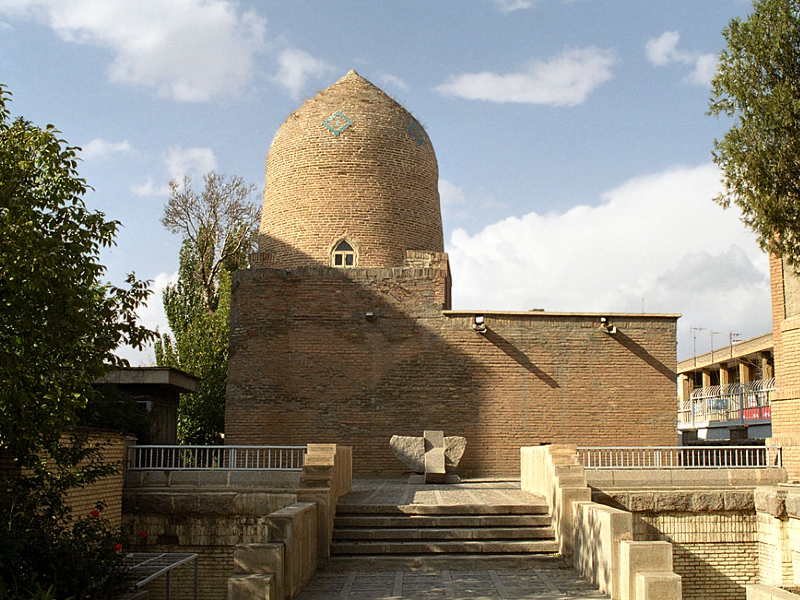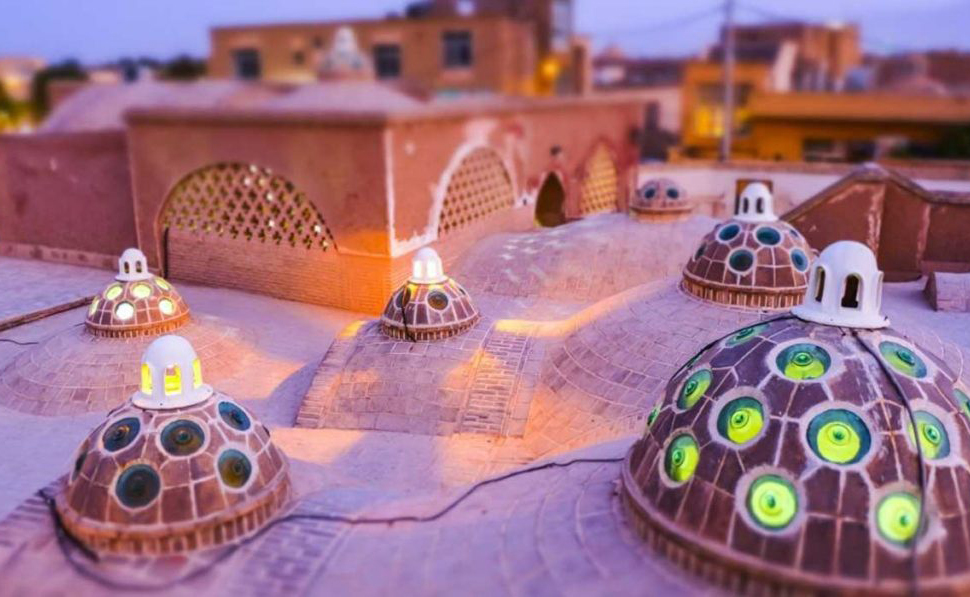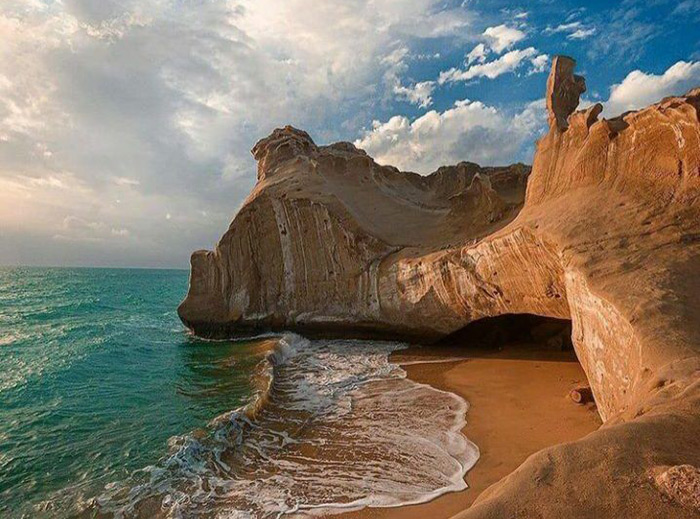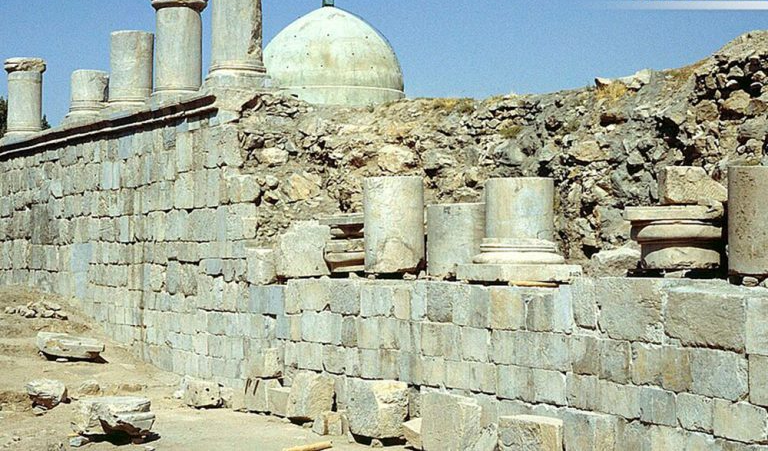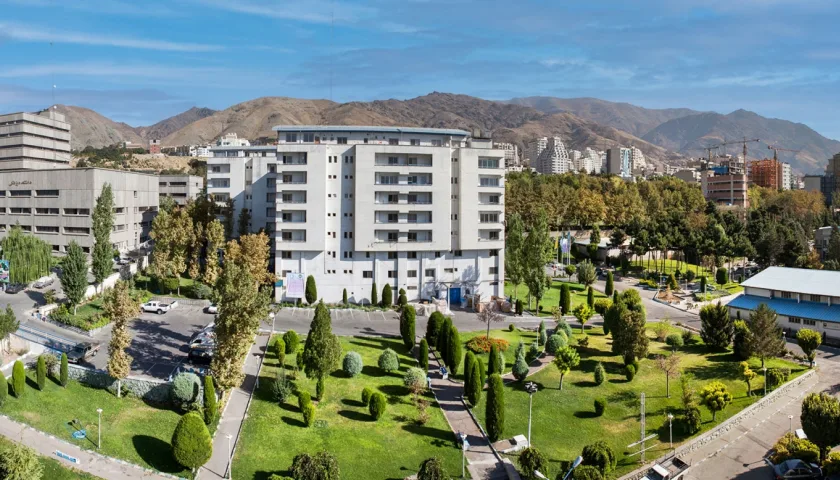The Tomb of Esther and Mordechai in Hamadan: Narrator of Iran’s Most Curious Historical Tales
Nestled in the heart of Iran, the ancient city of Hamedan is a treasure trove of historical landmarks and religious sites, attracting visitors from all corners of the globe. Among these revered destinations stands the Tomb of Esther and Mordechai, the second holiest shrine in Judaism, holding immense significance for Jewish people worldwide.
This awe-inspiring structure, dating back to the 3rd century AH, is a testament to the rich history and enduring faith of the Jewish community. Constructed from stone and brick, the tomb exudes an aura of serenity and reverence, drawing pilgrims from near and far to pay their respects.
The presence of the Tomb of Esther and Mordechai in Hamedan has played a pivotal role in shaping the city’s identity, serving as a beacon for Jewish people throughout the ages. It has fostered a sense of unity and cultural preservation, transforming Hamedan into a hub for Jewish gatherings and spiritual reflection.
Join us as we delve into the captivating history and enduring legacy of this sacred site, exploring its architectural beauty, religious significance, and the profound impact it has had on the Jewish community in Hamedan and beyond.
Additional Points to Highlight:
The Tomb of Esther and Mordechai is believed to house the remains of Queen Esther and her cousin Mordechai, prominent figures in the biblical book of Esther.
The story of Esther and Mordechai recounts the heroic efforts of a young Jewish woman who saved her people from extermination, becoming a symbol of courage, resilience, and the triumph of good over evil.
The tomb’s intricate design and ornamentation reflect the artistry and craftsmanship of the era, showcasing the fusion of Jewish and Persian architectural styles.
Beyond its religious significance, the Tomb of Esther and Mordechai stands as a testament to the enduring presence of Jewish culture and heritage in Iran.
Call to Action:
Embark on a pilgrimage to the Tomb of Esther and Mordechai, immersing yourself in the rich history and profound spirituality of this sacred site. Discover the enduring legacy of Queen Esther and Mordechai, and witness the harmonious blend of Jewish and Persian traditions that have shaped this remarkable landmark.
The Tomb of Esther and Mordechai: A Beacon of Jewish Faith and History
Standing as the second holiest shrine in Judaism, the Tomb of Esther and Mordechai in Hamedan holds immense significance for Jewish people worldwide. Situated in the heart of the city, along the well-known Shariati Street, this revered site draws pilgrims and visitors from all corners of the globe.
A Glimpse into the History of Esther and Mordechai
Before delving into the details of the tomb itself, let’s take a moment to explore the captivating story of Esther and Mordechai, revered figures in Jewish tradition.
Esther, an orphan raised by her cousin Mordechai, rose to prominence as Queen Esther in the court of King Ahasuerus of Persia. During this time, a villainous minister named Haman sought to exterminate the Jewish population. Undeterred, Esther courageously intervened, using her position to expose Haman’s evil plot and save her people from annihilation.
This pivotal event in Jewish history is commemorated annually as the joyous holiday of Purim, a celebration of Esther and Mordechai’s bravery and the triumph of good over evil. Their actions cemented their status as heroes and saviors in the Jewish faith.

The Tomb’s Significance and Enduring Legacy
The Tomb of Esther and Mordechai serves as a tangible link to this remarkable story, a physical manifestation of the enduring legacy of Esther and Mordechai. Its presence in Hamedan has played a crucial role in shaping the city’s identity, attracting Jewish pilgrims for centuries.
Beyond its religious significance, the tomb stands as a testament to the rich cultural heritage of the Jewish community in Iran. Its intricate architecture and ornamentation blend Jewish and Persian artistic styles, reflecting the harmonious coexistence of these two cultures.
An Unforgettable Pilgrimage
A visit to the Tomb of Esther and Mordechai is an unforgettable pilgrimage experience. Immerse yourself in the rich history and spirituality of this sacred site, pay homage to the heroic figures of Esther and Mordechai, and witness the enduring legacy of Jewish faith and tradition in Iran.
Additional Notes:
The tomb is believed to house the remains of Queen Esther and Mordechai.
The story of Esther and Mordechai is recounted in the biblical book of Esther.
The tomb’s proximity to the city center makes it easily accessible to visitors.
The tomb is a popular destination for Purim celebrations.
Delving into the Architectural Details of the Tomb of Esther and Mordechai
As you approach the Tomb of Esther and Mordechai, its imposing structure, primarily constructed from stone and brick, immediately captures your attention. The architectural style of this revered site reflects the Islamic era of the 7th century AH, a testament to the era’s artistry and craftsmanship.
The tomb’s main entrance features a small stone door, secured by a key, that grants access to the inner sanctum. Upon entering, you’ll find two prominent sarcophagi positioned at the heart of the square-shaped structure. These are believed to be the resting places of Esther and Mordechai.
The sarcophagi themselves are exquisite examples of craftsmanship, adorned with intricate Hebrew inscriptions that speak to the enduring legacy of these revered figures. Additionally, the tomb once housed a Torah scroll, meticulously written on deer skin. This precious artifact now resides in the Hamedan Museum of Cultural Heritage, further enriching the city’s cultural treasures.
Exploring the Tomb’s Architectural Features
Beyond the captivating story of Esther and Mordechai, the tomb’s architectural elements deserve careful attention. The structure’s square shape, a common motif in Islamic architecture, symbolizes stability and balance. The use of stone and brick, durable materials that have withstood the test of time, reflects the enduring nature of the faith and traditions enshrined within the tomb.
The small entrance door, while seemingly unassuming, serves as a symbolic threshold, inviting visitors to enter with reverence and humility. The intricate Hebrew inscriptions adorning the sarcophagi provide a tangible link to the Jewish faith and heritage, preserving the memory of Esther and Mordechai’s heroic deeds.
A Pilgrimage Through Time and Faith
A visit to the Tomb of Esther and Mordechai is a journey through time, faith, and cultural heritage. It is an opportunity to connect with the enduring legacy of Esther and Mordechai, whose courage and resilience saved the Jewish people from persecution. It is also a chance to appreciate the rich architectural heritage of the site, a harmonious blend of Jewish and Persian artistic traditions.
As you stand within the tomb’s serene confines, let your thoughts wander through the centuries, imagining the stories whispered within these walls. Pay homage to the figures who embody the triumph of good over evil, and immerse yourself in the spiritual atmosphere that has captivated pilgrims for centuries.
The Enduring Significance of the Tomb of Esther and Mordechai in Hamedan
The Tomb of Esther and Mordechai in Hamedan stands as a beacon of Jewish faith, history, and cultural heritage. Its significance extends far beyond its physical structure, encompassing a rich tapestry of religious traditions, historical narratives, and architectural marvels.
A Symbol of Jewish Resilience and Triumph
At the heart of the tomb’s importance lies the story of Esther and Mordechai, heroic figures who saved the Jewish people from annihilation during the reign of King Ahasuerus in Persia. Their courageous actions, commemorated annually as the joyous holiday of Purim, embody the triumph of good over evil and the enduring spirit of the Jewish faith.
The tomb serves as a tangible reminder of this pivotal event, a physical manifestation of the enduring legacy of Esther and Mordechai. It is a place where Jewish pilgrims come to pay homage, to connect with their heritage, and to draw inspiration from the story of these remarkable figures.
A Historical Treasure and Architectural Gem
Beyond its religious significance, the tomb holds immense historical value. Its construction dates back to the 7th century AH, reflecting the architectural styles and artistry of that era. The tomb’s square shape, a common motif in Islamic architecture, symbolizes stability and balance. The use of stone and brick, durable materials that have withstood the test of time, underscores the enduring nature of the faith and traditions enshrined within the tomb.
The intricate Hebrew inscriptions adorning the sarcophagi provide a tangible link to the Jewish faith and heritage, preserving the memory of Esther and Mordechai’s heroic deeds. The tomb’s serene atmosphere and harmonious blend of Jewish and Persian artistic traditions create a captivating space for reflection and spiritual connection.
A Pilgrimage Destination and Cultural Landmark
The Tomb of Esther and Mordechai has long been a pilgrimage destination for Jewish people from around the world. It is a place where they can connect with their faith, honor their ancestors, and draw inspiration from the story of Esther and Mordechai.
The tomb’s significance extends beyond the Jewish community, serving as a cultural landmark and a testament to the rich history of Hamedan. It is a reminder of the city’s diverse heritage and its role as a crossroads of civilizations.
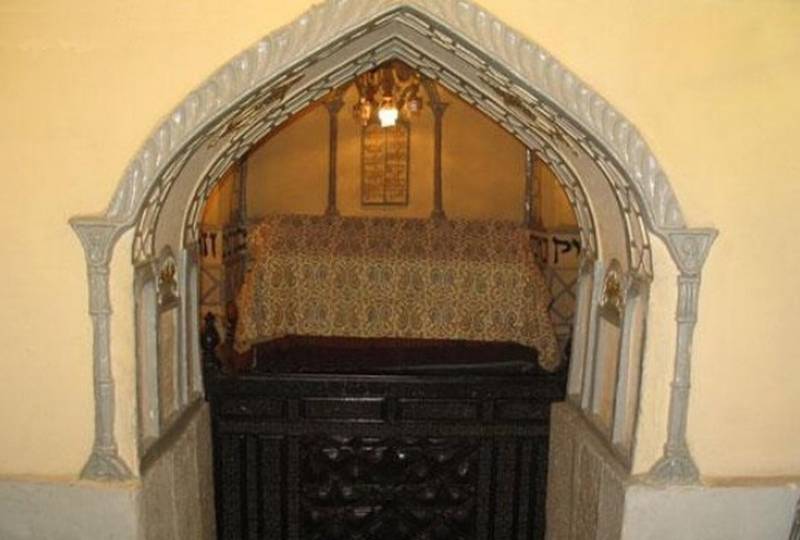
Visiting the Tomb of Esther and Mordechai
The Tomb of Esther and Mordechai is open to visitors from 9:00 AM to 8:00 PM daily, except for Saturdays when it is closed for Shabbat. Visitors are encouraged to dress modestly and respectfully. Photography inside the tomb is prohibited.
A visit to the Tomb of Esther and Mordechai is a journey through time, faith, and cultural heritage. It is an opportunity to connect with the enduring legacy of Esther and Mordechai, to appreciate the rich architectural heritage of the site, and to immerse yourself in the spiritual atmosphere that has captivated pilgrims for centuries.
Exploring Hamedan’s Treasures: Nearby Attractions and Accommodation Options
A Wealth of Historical Delights
A visit to the Tomb of Esther and Mordechai in Hamedan can be seamlessly integrated into an enriching exploration of the city’s rich historical tapestry. Within close proximity to the tomb lie a myriad of captivating attractions, each offering a glimpse into Hamedan’s vibrant past.
Traditional Hamedan Bazaar: Immerse yourself in the bustling atmosphere of the Traditional Hamedan Bazaar, where the aroma of spices mingles with the vibrant chatter of vendors and shoppers. Discover local handicrafts, exquisite carpets, and authentic Persian delicacies.
Baba Taher Tomb: Pay homage to the revered Persian poet Baba Taher at his mausoleum, a tranquil sanctuary adorned with his captivating verses.
Alavian Dome: Marvel at the architectural grandeur of the Alavian Dome, a masterpiece of Seljuk-era craftsmanship.
Qaleh Bathhouse (Hamedan Museum of Anthropology): Step back in time within the Qaleh Bathhouse, now transformed into the Hamedan Museum of Anthropology. Delve into the city’s fascinating cultural heritage through captivating exhibits.
Aref Ghazvini Tomb: Honor the legacy of the renowned poet Aref Ghazvini at his resting place, a serene haven amidst the city’s vibrant landscape.
St. Gregory Stephan Church: Admire the architectural artistry of St. Gregory Stephan Church, a testament to the city’s diverse religious heritage.
Shalbafan Mosque: Explore the intricate details of the Shalbafan Mosque, a mesmerizing example of Persian Islamic architecture.
Sharif ol Molk Mosque: Immerse yourself in the spiritual ambiance of the Sharif ol Molk Mosque, renowned for its exquisite tilework and calligraphy.
Qurban Historical Tower: Ascend the Qurban Historical Tower, offering panoramic views of the city’s enchanting skyline.
Ibn Sina Tomb: Pay your respects at the tomb of the renowned physician and philosopher Avicenna (Ibn Sina), a towering figure in the history of science.
Golshan Caravanserai: Discover the grandeur of the Golshan Caravanserai, a testament to the city’s rich trading past.
Hegmataneh Hill: Embark on an archaeological adventure at Hegmataneh Hill, the ancient site of Ecbatana, the capital of the Median Empire.
Hegmataneh Museum: Delve into the fascinating history of Hamedan at the Hegmataneh Museum, home to an array of archaeological artifacts.
Ganjnameh Village: Escape the city’s hustle and bustle at Ganjnameh Village, a picturesque retreat nestled amidst nature’s embrace.
Convenient Accommodation Options
The Tomb of Esther and Mordechai’s central location in Hamedan ensures easy access to a variety of comfortable accommodation options. For a convenient and memorable stay, consider these nearby hotels:
Bouali Hotel Hamedan: Experience luxury and comfort at the Bouali Hotel Hamedan, located just steps from the tomb.
Khatam Hotel: Enjoy a blend of traditional hospitality and modern amenities at the Khatam Hotel, situated in the heart of the city.
Parsian Hotel: Indulge in the refined elegance of the Parsian Hotel, offering a tranquil haven amidst the city’s vibrant energy.
Baba Taher Hotel Hamedan: Immerse yourself in the rich cultural heritage of Hamedan at the Baba Taher Hotel, named after the revered Persian poet.
These hotels provide an ideal base for exploring the Tomb of Esther and Mordechai and venturing further into Hamedan’s captivating historical and cultural treasures.

